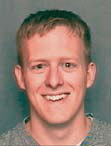
NASA to use RFID for spacecraft part tracking
Intermec, USA has announced a cooperative research effort with NASA George C. Marshall Space Flight Center to investigate new automatic identi?cation tracking (AIT) technologies, to qualify machine-readable symbol markings and RFID devices for use on spaceborne vehicles. Intermec will evaluate markings that have been exposed to low earth orbit environments during the third and fourth Materials International Space Station Experiment (MISSE) missions, and will also prepare additional marked samples and soft and rigid RFID tags to be included in MISSE 6, scheduled for July 2007. www.usingr?d.com
April 2009
GEO Siberia 2009
21-23 April
Novosibirsk, Russian
nenash@sibfair.ru
http://www.geosiberia.sibfair.ru
Defence Geospatial Intelligence Middle East
26 – 29 April
Dubai
http://www.geospatialdefence.com
May 2009
ENC-GNSS 2009
3-6 May
Naples, Italy
http://www.enc.gnss09.it
International Conference on Integrated Navigation Systems
25-27 May
Saint Petersburg, …

Hemisphere partners sponsorship of The Green Miles project
From December 2008 through October 2010, Arjen van Eijk and Florian Dirkse of the Netherlands will set sail on an adventure and produce a documentary targeted at raising awareness about the critical role oceans play in our world’s climate. To accomplish the “Care for the Ocean” mission, Hemisphere GPS and its partners Saderet and Nautikaris have donated navigation equipment. www.thegreenmiles.nl

Certain emerging navigation performance requirements for maritime applications are challenging to satisfy using systems available today. Very stringent performance requirements have, in particular, been identified for port areas, and cover aspects including service robustness, accuracy, integrity and availability…

GRACE hosts UK ‘Growing Galileo’ event
The GNSS Research and Applications Centre of Excellence (GRACE) based at the University of Nottingham hosted the UK ‘Growing Galileo’ event. The event focused on access to new funding from the European GNSS (Global Navigation Satellite Systems) Supervisory Authority (GSA) for collaborative R&D projects under the European Framework 7 Programme (FP7). www.grace.ac.uk

Satellite built by Indian university to be launched in ISRO’s next flight
For the first time in the history of Indian space research, a satellite developed by a university in India will be launched by Indian Space Research Institute (ISRO) during the next flight of the polar satellite launch vehicle (PSLV) in March-April this year. It will carry a small remote sensing satellite – Anusat, developed and fabricated by Chennai-based Anna University. www.business-standard.com

Intelligent map system tender by SLA
The Singapore Land Authority (SLA) has awarded the tender for the design, development and maintenance of a government-wide intelligent map system to NIIT Technologies Pvt. Ltd. The proposed solution shall be based on ESRI ArcGIS Server 9.3 and Microsoft Dot Net Technology. www.sla.gov.sg

Delhi Police to use GPS & GIS
HCL Infosystems revamped the infrastructure of Delhi Police with ICTdriven tools. The GPS-based solution will facilitate routing of emergency calls directly to PCR vehicle network operators for the scenarios that include traffic congestion, medical assistance and fire, as well as crime-in-progress situations. www.hclinfosystems.com











 (5.00 out of 5)
(5.00 out of 5)